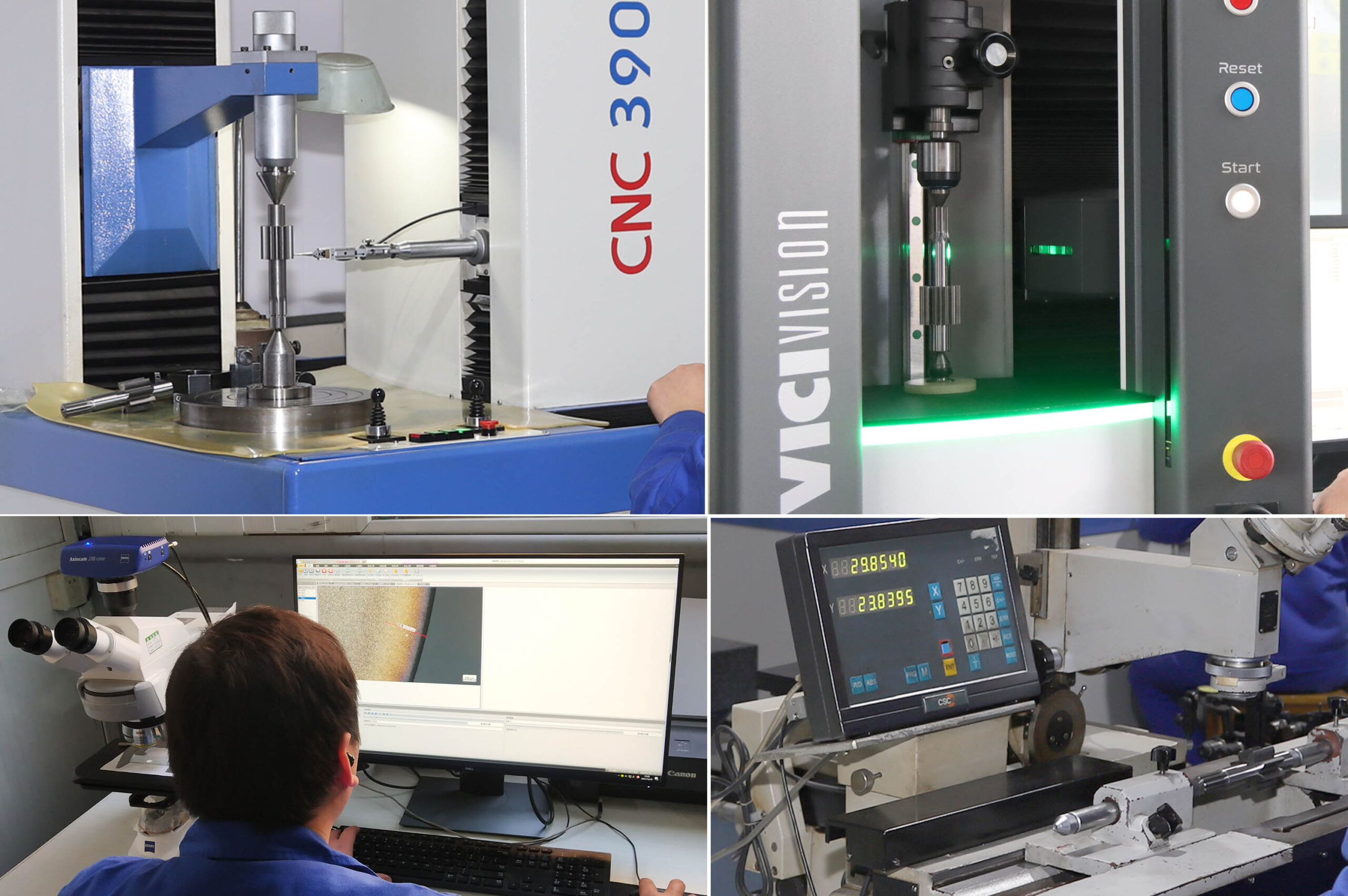Gear Shaft Inspection : Gear shafts are critical components in machinery, transmitting torque and rotation. Proper inspection ensures reliability, longevity, and performance. Below is a step-by-step guide for inspecting gear shafts.

1.Visual Inspection
Surface Defects: Check for cracks, pitting, scoring, or corrosion.
Wear Patterns: Look for uneven wear, scuffing, or signs of fatigue.
Keyway & Splines: Inspect for deformation, burrs, or excessive wear.
Lubrication Condition: Ensure proper lubrication; check for contamination.
2.Dimensional Inspection
Verify critical dimensions against drawings:
Shaft Diameter (micrometer, caliper)
Runout (dial indicator) – Check for bending or misalignment.
Gear Tooth Profile (gear tooth caliper, CMM) – Verify module, pressure angle, and tooth thickness.
Keyway/Spline Dimensions (go/no-go gauges)
Tools: Micrometer, caliper, dial indicator, CMM (Coordinate Measuring Machine).
3. Hardness & Material Integrity
Rockwell Hardness Test: Ensure proper heat treatment.
4.Runout & Alignment Check
Radial Runout: Place a dial indicator on the shaft and rotate to measure deviation.
Axial Runout: Check for wobble at the shaft end.
Gear Mesh Alignment: Use backlash measurement tools to ensure proper engagement.
Tools: Dial indicator, alignment laser (for precision checks).
5. Bearing & Journal Inspection
Bearing Fit: Check for looseness or excessive tightness.
Journal Wear: Measure diameter and surface finish (Ra value).
Bearing Seats: Inspect for fretting or brinelling.
Tools: Bore gauge, surface roughness tester.
6.Documentation & Reporting
Record all measurements and compare with OEM specifications.